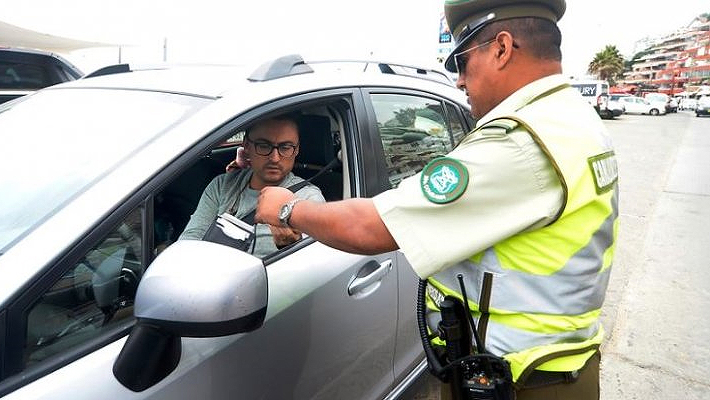At the end of 2017, the automotive fleet in Chile exceeded five million vehicles, including cars, trucks and buses. This is revealed by the figures of the National Automotive Association of Chile (ANAC), which attributes the rise to the increase in per capita income of Chileans.
If a breakdown is made, in the country there are more 4.68 million units of light and medium vehicles, while the truck fleet would have 232 thousand units and buses, 57 thousand. Although Chile’s automobile fleet has grown considerably -and has even doubled since 2005, to date, the national motorization rate is well below that of developed countries.
Given the massive presence of vehicles on Chilean streets, it is essential to have clear rules and require certain mandatory safety equipments to protect the safety of motorists. Of course, although it seems obvious, it is important that each car have its current documentation. Failure to comply with these obligations is grounds for the vehicle being removed from circulation by the corresponding authorities.
Here is a list of the items you must carry in your car when traveling in the country:
- Driver’s license: This legal document certifies that the person is qualified to operate a motor vehicle, so it is essential that it is valid at the time of an inspection. Any supervisory authority, such as the Carabineers or the Ministry of Transport, can demand that the driver show his license. Not having it is considered a serious fault of the Traffic Law.
- Unique Patent Plate: Each vehicle has two metallic badges that, with letters and numbers, give the identity to the car. This object is born and dies with the car, and is granted by the National Registry of Motor Vehicles. Both license plates must be visible, installed on the front and rear of the vehicle. The absence of any is a reason for infringement.
- Register: It is a document that, on the one hand, gathers the data of the owner of the vehicle and, on the other hand, has the information and characteristics of the car. This role is essential if you want to leave the country on board the car, because they must verify that the car belongs to the owner and is not a stolen species.
- Mandatory Personal Accident Insurance: This insurance covers the risks of death and bodily injury that may be suffered by the driver of the vehicle, the persons transported or any third party affected by an accident.
Having SOAP insurance is a mandatory requirement for each motorized car, however, it is also advisable to take out auto insurance, designed to protect the vehicle itself in case of theft or accident.
“They are sure to have different coverage, that is, they are complementary and not exclusive.” Although Chilean regulations only require SOAP, it is advisable that each motorist be responsible for contracting some of the auto insurance available in the market; give support to the owner of the vehicle in case the investment is at risk, “says Juan in safety clothing.
To know more about these different insurances you can check here.
- Circulation Permit: This tax must be paid each year for the vehicle to the municipality. To obtain this permit, it is necessary to comply with certain requirements: certificate of technical revision and gases per day, circulation permit of the previous year and SOAP.
- Reflective vest: In recent years, the Chilean law declared mandatory the possession of a reflective vest in each vehicle. The police authority can demand it and its use is essential in case the motorist descends in areas of low lighting.
- Spare wheel: It is a complete additional wheel, with rim and tire included. The intention is that it serves to replace another operating wheel that is punctured, broken, or broken.
Having these elements will not only make their lives simpler, but it will also allow them to protect the rest in any of the situations described above.
